My question is in regards to dynamic range of short time period TDCs, or alternative solutions to a time to digital application.
If further information is required, please ask.
Question.
TDC7200 datasheet says, Measurement Range: – Mode 1: 12 ns to 500 ns – Mode 2: 250 ns to 8 ms
I wish to measure 66.6ps as my fastest sample and 3.33ns as my slowest sample.
Both mode 1 and 2 are outside of my desired range, however I see the datasheet also says 55ps resolution. Further down it also says LSB = 55ps.
Does this mean that if I wait for 12ns then all samples thereafter are within 55ps accuracy?
In other words:
- fastest sample = 12ns
- next sample = 12.055ns
- next 12.11ns
- next +55ps
- etc etc until the nBit register is full?
